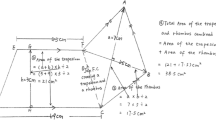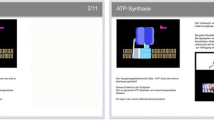Abstract
In cognitive load theory, element interactivity has been used as the basic, defining mechanism of intrinsic cognitive load for many years. In this article, it is suggested that element interactivity underlies extraneous cognitive load as well. By defining extraneous cognitive load in terms of element interactivity, a distinct relation between intrinsic and extraneous cognitive load can be established based on whether element interactivity is essential to the task at hand or whether it is a function of instructional procedures. Furthermore, germane cognitive load can be defined in terms of intrinsic cognitive load, thus also associating germane cognitive load with element interactivity. An analysis of the consequences of explaining the various cognitive load effects in terms of element interactivity is carried out.
Similar content being viewed by others
References
Beckmann, J. (2010). Taming a beast of burden—On some issues with the conceptualisation and operationalisation of cognitive load. Learning and Instruction, 20, 250–264.
Brunken, R., Plass, J. L., & Leutner, D. (2003). Direct measurement of cognitive load in multimedia learning. Educational Psychologist, 38, 53–61.
Brunken, R., Plass, J. L., & Leutner, D. (2004). Assessment of cognitive load in multimedia learning with dual-task methodology: Auditory load and modality effects. Instructional Science, 32, 115–132.
Chandler, P., & Sweller, J. (1991). Cognitive load theory and the format of instruction. Cognition and Instruction, 8, 293–332.
Chandler, P., & Sweller, J. (1996). Cognitive load while learning to use a computer program. Applied Cognitive Psychology, 10, 151–170.
Chi, M. T., Bassok, M., Lewis, M. W., Reimann, P., & Glaser, R. (1989). Self-explanations: How students study and use examples in learning to solve problems. Cognitive Science, 13, 145–182.
Cooper, G., & Sweller, J. (1987). Effects of schema acquisition and rule automation on mathematical problem-solving transfer. Journal of Educational Psychology, 79, 347–362.
Gerjets, P., Scheiter, K., & Catrambone, R. (2006). Can learning from molar and modular worked examples be enhanced by providing instructional explanations and prompting self-explanations? Learning and Instruction, 16, 104–121.
Kalyuga, S., Chandler, P., & Sweller, J. (1998). Levels of expertise and instructional design. Human Factors, 40, 1–17.
Kalyuga, S., Chandler, P., Tuovinen, J., & Sweller, J. (2001). When problem solving is superior to studying worked examples. Journal of Educational Psychology, 93, 579–588.
Kalyuga, S., Ayres, P., Chandler, P., & Sweller, J. (2003). The expertise reversal effect. Educational Psychologist, 38, 23–31.
Leahy, W., & Sweller, J. (2005). Interactions among the imagination, expertise reversal, and element interactivity effects. Journal of Experimental Psychology: Applied, 11, 266–276.
Newell, A., & Simon, H. A. (1972). Human problem solving. Englewood Cliffs: Prentice Hall.
Paas, F. (1992). Training strategies for attaining transfer of problem-solving skill in statistics: A cognitive-load approach. Journal of Educational Psychology, 84, 429–434.
Paas, F., & van Merrienboer, J. (1993). The efficiency of instructional conditions: An approach to combine mental-effort and performance measures. Human Factors, 35, 737–743.
Paas, F., & van Merrienboer, J. (1994). Variability of worked examples and transfer of geometrical problem-solving skills: A cognitive-load approach. Journal of Educational Psychology, 86, 122–133.
Paas, F., Tuovinen, J. E., Tabbers, H., & Van Gerven, P. W. (2003). Cognitive load measurement as a means to advance cognitive load theory. Educational Psychologist, 38, 63–71.
Pollock, E., Chandler, P., & Sweller, J. (2002). Assimilating complex information. Learning and Instruction, 12, 61–86.
Renkl, A. (1997). Learning from worked-out examples: A study on individual differences. Cognitive Science, 21, 1–29.
Renkl, A., & Atkinson, R. (2003). Structuring the transition from example study to problem solving in cognitive skills acquisition: A cognitive load perspective. Educational Psychologist, 38, 15–22.
Renkl, A., Atkinson, R., & Grosse, C. (2004). How fading worked solution steps works—a cognitive load perspective. Instructional Science, 32, 59–82.
Schnotz, W., & Kurschner, C. (2007). A reconsideration of cognitive load theory. Educational Psychology Review, 19, 469–508.
Sweller, J. (1994). Cognitive load theory, learning difficulty, and instructional design. Learning and Instruction, 4, 295–312.
Sweller, J. (2003). Evolution of human cognitive architecture. In B. Ross (Ed.), The psychology of learning and motivation (Vol. 43, pp. 215–266). San Diego: Academic Press.
Sweller, J. (2004). Instructional design consequences of an analogy between evolution by natural selection and human cognitive architecture. Instructional Science, 32, 9–31.
Sweller, J., & Chandler, P. (1994). Why some material is difficult to learn. Cognition and Instruction, 12, 185–233.
Sweller, J., Mawer, R. F., & Ward, M. R. (1983). Development of expertise in mathematical problem solving. Journal of Experimental Psychology: General, 112, 639–661.
Sweller, J., Chandler, P., Tierney, P., & Cooper, M. (1990). Cognitive load as a factor in the structuring of technical material. Journal of Experimental Psychology: General, 119, 176–192.
Tindall-Ford, S., Chandler, P., & Sweller, J. (1997). When two sensory modes are better than one. Journal of Experimental Psychology: Applied, 3, 257–287.
van Gog, T., & Paas, F. (2008). Instructional efficiency: Revisiting the original construct in educational research. Educational Psychologist, 43, 16–26.
Author information
Authors and Affiliations
Corresponding author
Rights and permissions
About this article
Cite this article
Sweller, J. Element Interactivity and Intrinsic, Extraneous, and Germane Cognitive Load. Educ Psychol Rev 22, 123–138 (2010). https://doi.org/10.1007/s10648-010-9128-5
Published:
Issue Date:
DOI: https://doi.org/10.1007/s10648-010-9128-5




